49 years ago today, the Apple Computer company was founded by Steve Jobs, Steve Wozniak, and Ronald Wayne to sell their ground-breaking Apple I personal computer kits. Their startup is now the most valuable company in the world, becoming the first publicly-traded company to be valued at $1 trillion in 2018—a figure that has nearly quadrupled since then. READ some interesting historical bites of Apple… (1976)
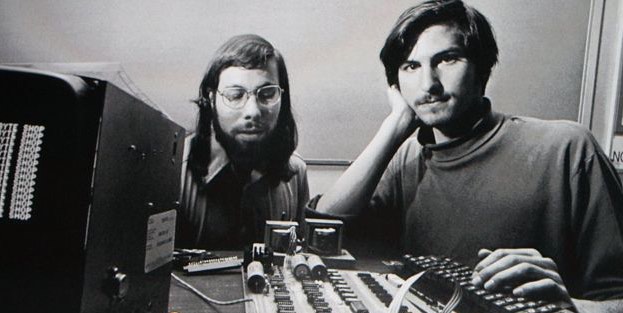
In order to pay for the creation of Apple I, Wozniak had to sell his HP-65 calculator, while Jobs was willing to part with his Volkswagen bus. The paltry $1,300 they received for these two items was enough, however, to get the show on the road.
Apple II, if one can even conceive of such a thing today, used audio cassette tapes as storage devices, and was the company’s first commercial success as it bridged the business world to the home office needs of its users. It achieved this in part with a clever spreadsheet program called VisiCalc.
On December 12th, 1980, Apple went public, and within the first day, 300 millionaires had been created by the wealth of the tech-savvy investors of America flowing into the burgeoning firm at $22 a share.
Apple could be described as inventing the modern tablet as we know it—long before the iPad ever came out. The PenLite, created in 1992 to bring the Mac OS to a tablet, used a stylus as the input device rather than a mouse, but it was eventually cancelled in favor of the Newton, a similar design and one that accommodated an entire computer into the tablet format rather than a pared-back software.
MORE Good News on this Date:
- The US House of Representatives first met in New York City with the 435 members holding its first quorum, electing Frederick Muhlenberg of Pennsylvania as its first Speaker (1789)
- A London-Paris telephone connection was opened (1891)
- President Nixon signed a law that required the Surgeon General’s warnings to be placed in view on all tobacco products, and banned cigarette advertising on TV and radio (1970)
- The world’s seven wealthiest nations, the G7, agreed to give $24 billion in aid to the states formerly known as the USSR (1992)
- Same-sex marriage became legal in the Netherlands (2001)
- The Netherlands legalized euthanasia, becoming the first nation in the world to do so (2002)
- Google launched its Gmail service to the public and within 12 years the free email service had one billion active users worldwide (2004)
52 years ago today, the federal government of India, under the administration of Indira Gandhi, implemented Project Tiger, a comprehensive strategy to try and reverse the decline of India’s Bengal tigers across the country. By 2006, camera trap surveys created an estimate that the total tiger population numbered 1,411 individuals. It was claimed that owing to the project, the number of tigers increased to 2,603–3,346 individuals by 2018.

Chief among the lessons learned from mistakes made was alienating indigenous and rural communities from decision-making and consultation. These groups were thrown off their land to make way for tiger reserves, but were often those whose livelihoods depended most on the forests remaining intact—if they remained poor the forests and tigers diminished, if their lot in life was improved, the forests and tigers would grow.
From the project’s start to the early 2000s, the initial 9 tiger reserves covering an area of 3,519 square miles had been increased to 23 tiger reserves encompassing an area of 13,000 square miles (33,000 km2). (1973)
59 years ago, the first World Festival of Black Arts was organized and held over the month of April in Dakar, Senegal. Artists of every form hailing from 45 African, European, Caribbean, and North and South American countries came to display the first collected artistic works of the African Diaspora. Among those were everyone from Duke Ellington to a capoeira troupe from Bahia, to historian Cheikh Anta Diop, who wrote extensively on post-colonial Africa, and spent an academic career fighting against a bizarre prevailing theory that the ancient Egyptians were somehow a White European culture.

Present also were writers, such as the Harlem Renaissance poet Langston Hughes, and Wole Soyinka the Nigerian author and first sub-Saharan African to win the Nobel Prize for Literature. Dancers and other musicians rounded out the performances, and William Greaves, an African American filmmaker, produced a 50-minute documentary.
The festival has been held in other years, including 1977 and 2009. (1966) WATCH The intro to a documentary about the festival…
And 85 years ago today, Wangari Maathai, the Kenyan environmental activist and scientist who started the Green Belt Movement, was born. Focused on planting trees, she became the first African woman to receive the Nobel Peace Prize for “her contribution to sustainable development, democracy and peace”. Started in 1977 and run mostly by women, Maathai’s movement has planted over 51 million trees and trained 30,000 women in forestry, agriculture, and bee-keeping, helping them earn a living while preserving land. She was also a member of Kenya’s Parliament and the first Eastern African woman to receive a Ph.D. (1940–2011)
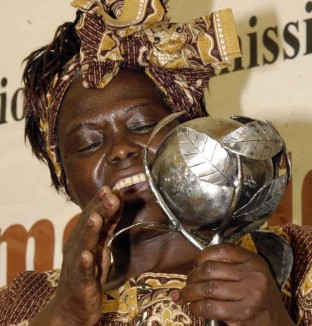
51 years ago today, John Lennon and Yoko Ono held a press conference to announce the formation of a new country called Nutopia. Not for April Fool’s Day, but ahead of the release of the Mind Games LP which included a written description of the “country” and its laws and a track called Nutopian International Anthem, which contained only silence. “Nutopia has no land, no boundaries, no passports, only people; Nutopia has no laws other than cosmic; all people of Nutopia are ambassadors of the country.” (1973)
And, 134 years ago today, the French impressionist painter Paul Gauguin left France for Tahiti, where he would create his most luminous canvases. He wanted to escape “everything that is artificial and conventional” and set sail promising to return a rich man.
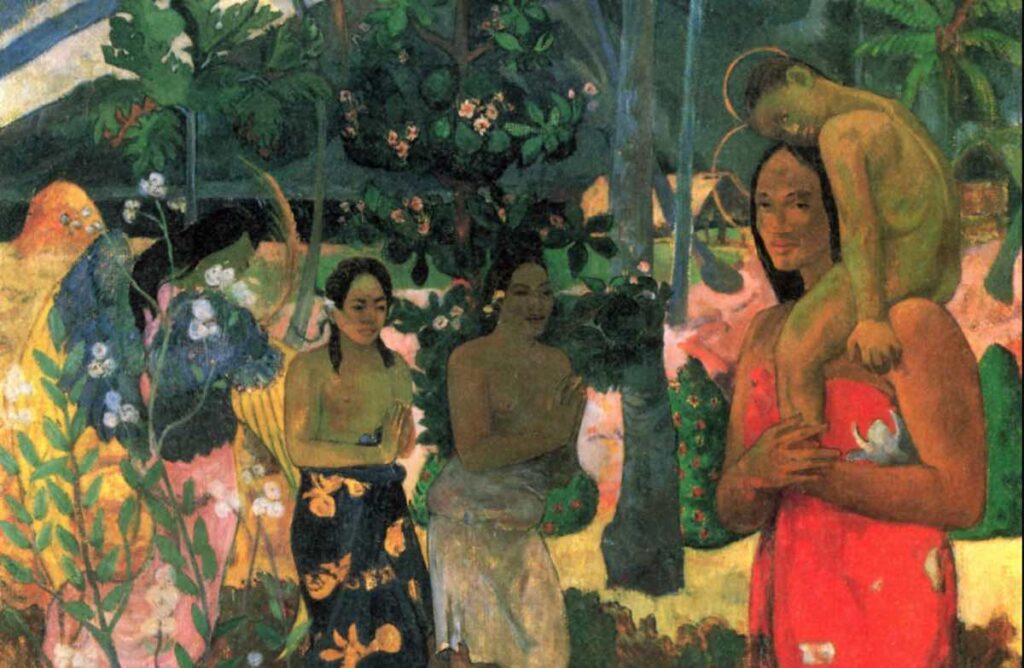
He eventually set up his studio in a native-style bamboo hut where he created paintings depicting Tahitian life, such as Ave Maria (above/cropped), which became his most prized Tahitian painting.
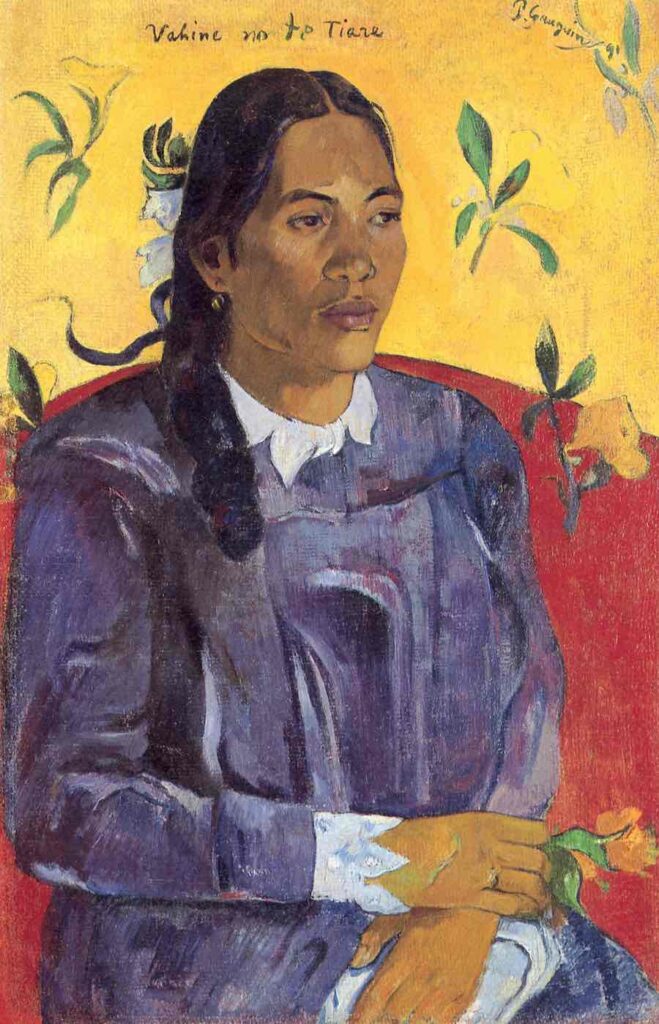
Many of his finest works date from this period. His first portrait of a Tahitian model was Woman with a Flower, which he sent to his patron George-Daniel de Monfreid, who would become his devoted champion and receive 8 more canvases by mail. By 1892, the painting, in all its sensual Polynesian splendor, was hanging in a Paris gallery.
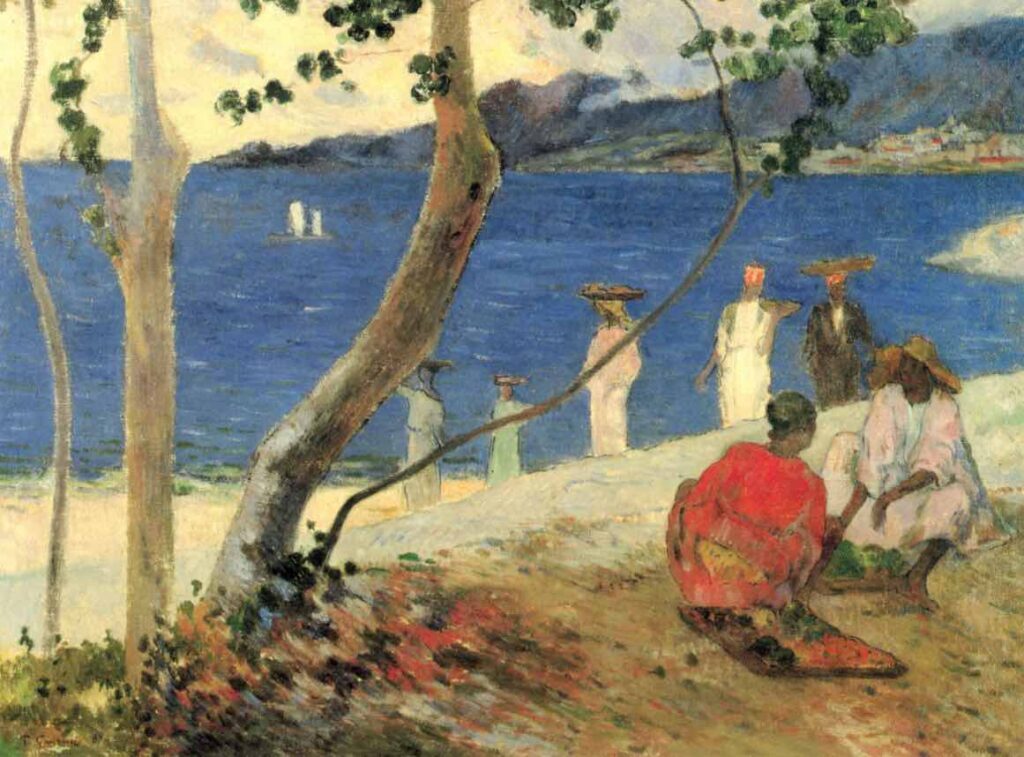
He executed some twenty paintings and a dozen woodcarvings over the next year. After returning to France with 70 other pieces in 1893, he wrote a travelogue—Noa Noa—and, though not at all wealthy, his art is today displayed in the Metropolitan Museum of Art, the Louvre, Van Gogh Museum, Musée d’Orsay, and the MoMA. (1891)
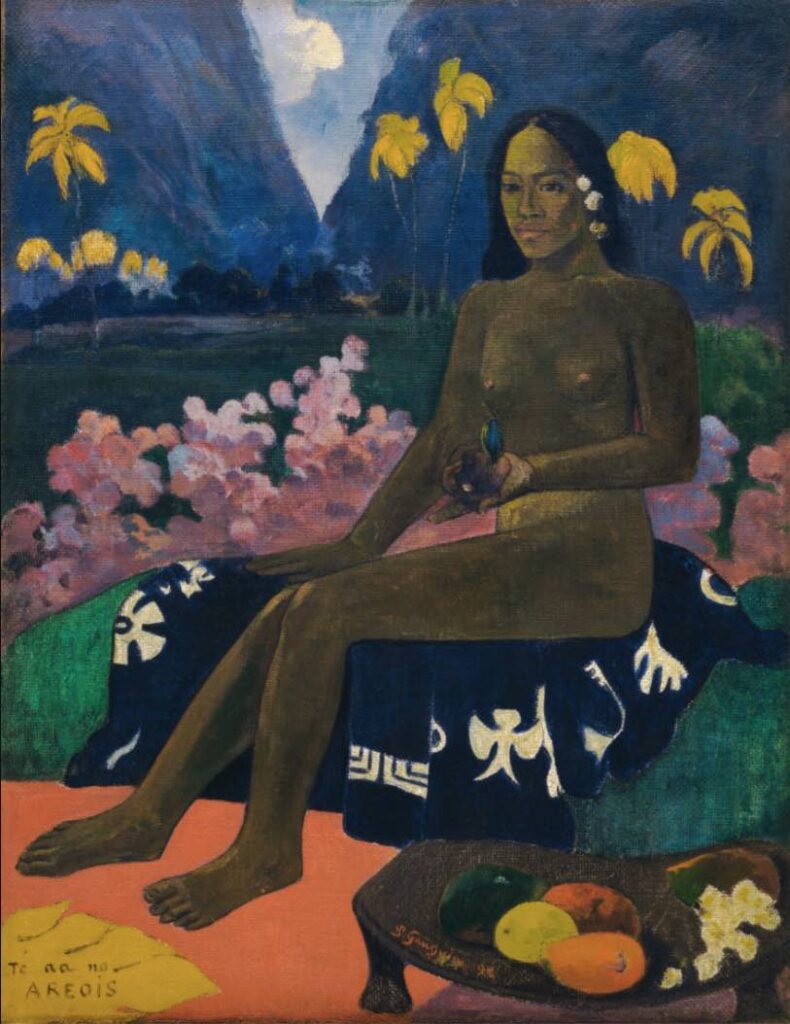
SHARE the Milestones, Memories, and Music…



















